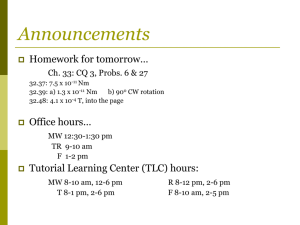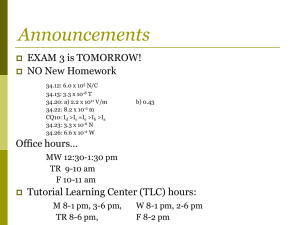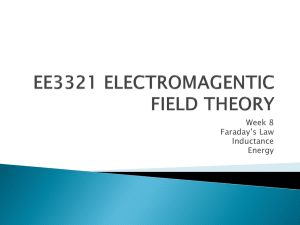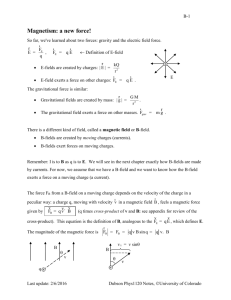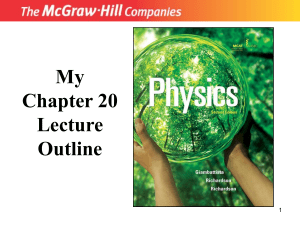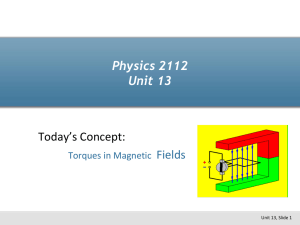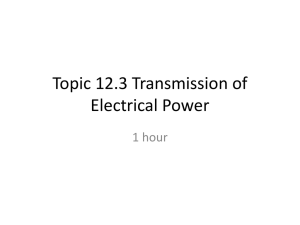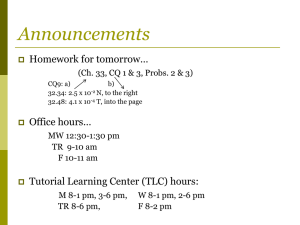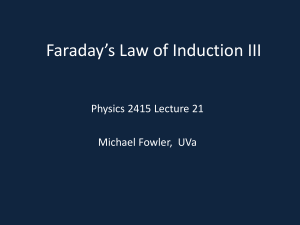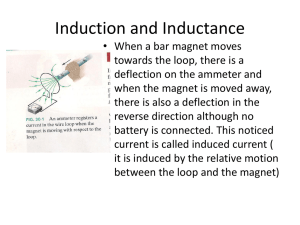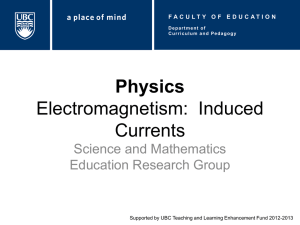chapter33.3 - Colorado Mesa University
advertisement
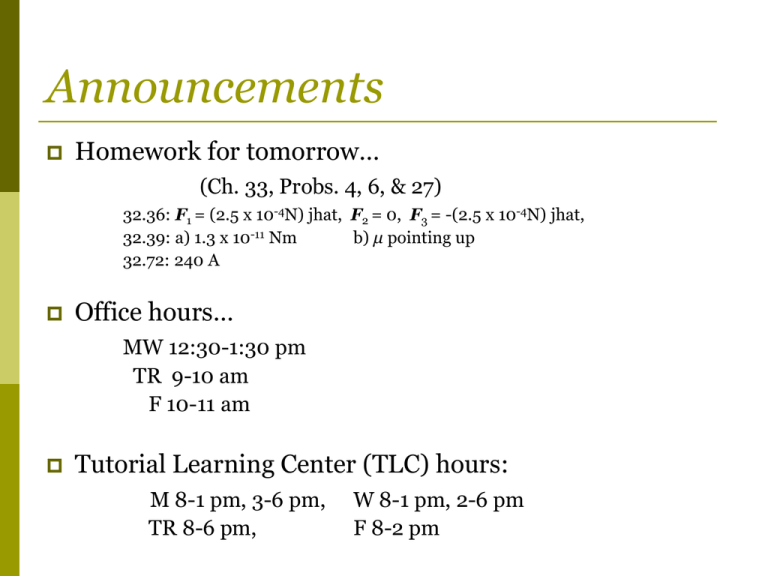
Announcements Homework for tomorrow… (Ch. 33, Probs. 4, 6, & 27) 32.36: F1 = (2.5 x 10-4N) jhat, F2 = 0, F3 = -(2.5 x 10-4N) jhat, 32.39: a) 1.3 x 10-11 Nm b) μ pointing up 32.72: 240 A Office hours… MW 12:30-1:30 pm TR 9-10 am F 10-11 am Tutorial Learning Center (TLC) hours: M 8-1 pm, 3-6 pm, TR 8-6 pm, W 8-1 pm, 2-6 pm F 8-2 pm Chapter 33 Electromagnetic Induction (Motional emf & Magnetic Flux) Last time… Motional emf for a conductor moving with velocity v perpendicular to the B-field… The induced current in the circuit…. The force required to pull the wire with a constant speed v… Last time… The rate at which work is done on the circuit exactly equals the rate at which energy is dissipated. Summarizing: 1. Pulling or pushing the wire through the B-field at speed v creates a motional emf in the wire and induces a current in the circuit. 2. To keep the wire moving at constant speed, a pulling or pushing force must balance the magnetic force on the wire. This force does work on the circuit. 3. The work done by the pulling or pushing force exactly balances the energy dissipated by the current as it passes through the resistance of the circuit. i.e. 33.3 Lighting a bulb The figure below shows a circuit consisting of a flashlight bulb, rated 3.0 V/1.5 W, and ideal wires with no resistance. The right wire of the circuit, which is 10 cm long, is pulled at a constant speed v through a perpendicular B-field of strength 0.10 T. What speed must the wire have to light the bulb to full brightness? What force is needed to keep the wire moving? Eddy Currents Consider pulling a sheet of metal through a B-field. Two “whirlpools” of current begin to circulate in the solid metal, called eddy currents. The magnetic force on the eddy currents is a retarding force. form of magnetic braking. 33.3: Magnetic Flux Faraday found that a current is induced when the amount of B-field passing through a coil or loop of wire changes.. What exactly is “amount of B-field passing through a loop” ? 33.3: Magnetic Flux What is the magnetic flux, Φm , passing through a loop? Define the area vector, ,… Magnitude: Area A of the loop Direction: perpendicular to the loop 33.3: Magnetic Flux What is the magnetic flux, Φm , passing through a loop? SI Units? “Weber” 33.3: Magnetic Flux What is the magnetic flux, Φm , passing through a loop? or SI Units? “Weber” i.e. 33.4: A circular loop in a B-field The figure below is an edge view of a 10 cm diameter circular loop in a uniform 0.050 T magnetic field. What is the magnetic flux through the loop? Quiz Question 1 The metal loop is being pulled through a uniform B-field. Is the magnetic flux through the loop changing? 1. Yes. 2. No. Quiz Question 2 The metal loop is rotating in a uniform B-field. Is the magnetic flux through the loop changing? 1. Yes. 2. No. Magnetic Flux in a non-uniform field What is the magnetic flux, Φm , passing through the loop in the non-uniform B-field? Magnetic Flux in a non-uniform field What is the magnetic flux, Φm , passing through the loop in the non-uniform B-field? Notice: The integral is over the area of the loop. i.e. 33.5: Magnetic flux from the current in a long straight wire The 1.0 cm x 4.0 cm rectangular loop of the figure below is 1.0 cm away from a long straight wire. The wire carries a current of 1.0 A. What is the magnetic flux through the loop?
